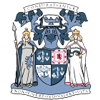One of the most difficult and demanded facial cosmetic surgeries is a rhinoplasty, also known as a nose job. Although most of them are successful, only a small percentage of patients might not be satisfied with the result. You are not in an isolated country; should you be one of them? Revision rhinoplasty is a type of secondary surgery to address the problems of a previous surgery and is a special branch that is dedicated to overcoming these problems. This guide will assist you in knowing when to think of it and, more importantly, what can be realistically achieved.
Secondary surgery is regarded as more difficult than the first one. They are no longer dealing with a natural anatomical structure, but rather the surgeon must be able to work through scar tissue, changed bone and cartilage, and possibly compromised blood supply. It is not only intended to enhance aesthetics, but can, in many cases, be aimed at nasal function restoration, including resolving breathing problems that the initial operation may have created or aggravated.
A revision rhinoplasty procedure is a serious operation that has to be carefully researched as to the surgeon one chooses. You have to find a board-certified cosmetic surgeon or facial cosmetic surgeon who has specialized in revision rhinoplasty and has had considerable experience in complex cases of the nose.
Making a decision to have a second surgery is a big one. Vision patients request revision most often because of the following reasons:
This is frequently the strongest argument. Chronic nasal obstruction might occur in you, in case your main rhinoplasty procedure failed to fix a deviated septum, collapsed nasal valves, or a pinched nasal tip. One of the main aims of revision rhinoplasty surgery is the restoration of functionality.
Although perfection is impossible, some obvious aesthetic problems can be solved. These include:
The nose can have lost the supporting structure, resulting in instability or a collapsed look, especially when inhaling.
In rare cases, a patient might not have healed well under normal conditions during the initial rhinoplasty surgery because of their peculiar biology and develop unforeseen scar tissue or contours.
Patience is paramount. You should wait until the first procedure is completely healed, and in this case, it takes at least 12 months. The swelling during this period goes down a lot, and the tissues become soft and assume their end position. It is very poor taste to rush into a revision before this time, since:
Physical and emotional readiness: During the consultation, your surgeon will determine the time during which you are best prepared.
The key to a successful revision rhinoplasty is managing expectations. One has to know what one can and can not do.
A revision rhinoplasty consultation is more thorough than a primary procedure consultation. Be prepared to discuss:
Deciding to have revision rhinoplasty is a path to recovery--a path of form and function. It involves collaboration with a very trained surgeon, having realistic expectations and a lot of patience. Although the path might be more difficult and lengthy than the initial one, in the hands of the right person and a skillful cosmetic surgeon, revision rhinoplasty can be a deeply rewarding experience, as it can give you the functional, natural nose you are entitled to.
You need not be in a hurry to take this route in case you are contemplating it. Research and consult, make sure that you are emotionally prepared for the process. It is not only to heal a nose, but also to bring a lifetime of peace of mind and confidence.

ROYAL COLLEGE OF
SURGEONS

MEDICAL UNIVERSITY OF SOUTH
CAROLINA

UNIVERSITY OF SOUTHERN
CALIFORNIA

AMERICAN ACADEMY OF
COSMETIC SURGERY

AMERICAN SOCIETY OF
LIPOSUCTION SURGERY